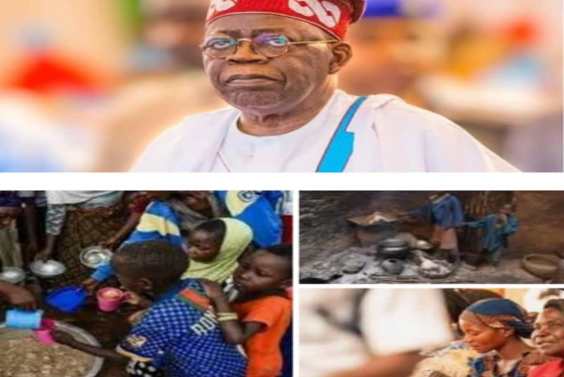|
Listen now
Getting your Trinity Audio player ready...
|
By BLAISE UDUNZE
When the National Bureau of Statistics (NBS) yesterday announced that Nigeria’s inflation rate had dropped to 18.02 percent in September 2025, the news was met with official applause. Government officials hailed it as evidence that the economy is recovering.
Yet, for the millions of Nigerians struggling to buy food, pay rent, or fuel their generators, the question remains painfully simple: has life become any easier? The answer, for most Nigerians, is no.
Inflation has long been one of Nigeria’s most stubborn economic afflictions that has been eroding purchasing power, distorting markets, and deepening poverty.
The recent “decline” in inflation has not eased the everyday hardship of ordinary people. Prices are still rising, incomes remain stagnant, and hope for relief feels distant.
Nigeria’s inflation is fundamentally cost-push in nature, not demand-driven. Rising energy prices, unstable foreign exchange, high transport costs, and insecurity in food-producing regions continue to fuel cost increases across all sectors.
The removal of fuel subsidies and the floating of the naira, though intended to restore fiscal discipline, have instead unleashed a new wave of inflationary pain. Each naira devaluation has made imports costlier, and with Nigeria’s heavy dependence on imported food, fuel, and raw materials, the consequences are devastating for consumers.
This disconnect between the headline figures and the lived reality has deepened public distrust. Many Nigerians believe official inflation data do not reflect the economic pain they face daily. Critics, including the International Monetary Fund (IMF), have flagged weaknesses in Nigeria’s inflation measurement system: outdated expenditure weights dating back to 2003/2004, poor representation of the informal sector, and underweighted essentials like food and energy. Because the Consumer Price Index (CPI) is infrequently rebased, it often lags behind real market conditions, which makes the official inflation rate appear lower than what citizens actually experience.
Independent trackers such as the “Jollof Index,” which measures the cost of cooking a basic Nigerian meal, consistently show higher inflation than the NBS reports. To most households, this is not a debate about methodology but about survival. A N1,000 note that once covered dinner now barely buys a few milk cups of rice. A civil servant’s salary, unchanged for years, has lost more than half its value.
The supposed inflation “drop” is deceptive to those whose plates are emptier and whose transport costs have tripled.
Inflation has been a recurring symptom of Nigeria’s economic fragility since the return to democracy in 1999. Under Olusegun Obasanjo (1999-2007), inflation briefly spiked to 28 percent but eventually stabilized at single digits through reforms and debt relief. Umaru Musa Yar’Adua (2007-2010) faced steady price rises amid Niger Delta unrest and weak policy continuity.
Goodluck Jonathan (2010-2015) managed to keep inflation moderate, averaging about 10 percent, helped by oil windfalls and tighter monetary policy. However, under Muhammadu Buhari (2015-2023), inflation more than doubled, peaking above 21 percent as recession, currency crises, and supply shocks battered the economy.
The current administration of Bola Tinubu (2023-present) has witnessed the sharpest surge yet, which was above 34 percent in late 2024, as this was driven by subsidy removal, naira float, and imported inflation. Though the official rate now claims to have fallen to 18.02 percent after statistical rebasing, Nigerians still endure the steepest cost-of-living crisis in the nation’s history.
Across these 24 years of democratic governance, the pattern is unmistakable, showing that Nigeria’s inflation is structural, not cyclical. It is rooted in weak productivity, fiscal indiscipline, policy inconsistency, and dependence on imports. While numbers fluctuate, the hardship remains constant. Inflation may fall on paper, but it never leaves the market stalls, the bus parks, or the kitchens of ordinary Nigerians.
Efforts by the Central Bank of Nigeria (CBN) to fight inflation through higher interest rates have achieved little because monetary tools alone cannot fix structural weaknesses.
The way forward demands a broader agenda through reviving domestic production, securing farmlands, stabilizing the foreign exchange market, curbing fiscal leakages, and reforming energy and transport infrastructure to cut costs. Until then, inflation data will continue to serve as statistical comfort in an economic storm.
Inflation is not just a number; it is a mirror of national mismanagement. For now, Nigerians have learned to distrust figures that contradict the evidence of their daily struggles. A fall to 18.02 percent may please policymakers and investors, but it changes nothing for the teacher whose salary buys less each month or the parents who must choose between school fees and food.
Economic recovery is not when inflation falls; it’s when Nigerians can afford to live again, not living impoverished.
The latest World Bank Nigeria Development Update delivers a chilling verdict, as 139 million Nigerians, over half of the nation’s population, are said to be living in poverty. The report, titled “From Policy to People: Bringing the Reform Gains Home,” praises Nigeria’s bold macroeconomic reforms but warns that the gains have yet to trickle down to the people.
Poverty in Nigeria is not just growing; it’s metastasizing. The World Bank’s 139 million estimate translates to roughly six in ten Nigerians living below the poverty line.
The numbers are stark. The implications are severe. And the solutions will require more than incremental policy tweaks. What the nation is witnessing is an emergency, one that demands bold leadership, systemic change, and national resolve.
Despite measurable progress on paper indicating improved revenue inflows, a more stable foreign exchange market, and the easing of inflationary pressures, the truth in the streets tells a very different story.
Nigeria today sits at a troubling crossroads where official statistics clash with the bitter truth of daily survival. Each month, the National Bureau of Statistics (NBS) releases inflation figures suggesting a country “stabilising.” Yet in the kitchens of Lagos, in the weary sighs of market women, and in the hollowed eyes of hungry children, a harsher reality unfolds, which is that empty pots don’t lie. Hunger, not percentages, is Nigeria’s truest inflation index.
Contrary to the promise by this administration of sweeping reforms to “reset” the economy, they unleashed an economic storm that continues to batter households. A bag of rice that sold for N35,000 two years ago now costs between N70,000 and N90,000. A crate of eggs has jumped from N1,200 to N6,200. Tomatoes, garri, and pepper, which are staples of everyday life, have drifted beyond the reach of ordinary Nigerians.
This statistical adjustment may appear elegant on paper, but for millions who now spend 70 to 80 percent of their income on food, such figures are not just implausible; they’re insulting. Nigeria may have changed its base year, but it hasn’t changed the harsh arithmetic of survival.
Until the supposed recovery begins to show up in the kitchen, the market, and the wallet, the fall in inflation will remain what it truly is a statistical victory and a national deceit.
Again, we must understand that economic recovery is not when inflation falls; it’s when Nigerians can afford to live again.
Blaise, a journalist and PR professional writes from Lagos, can be reached via: [email protected]




 Follow the MoneyCentral Nigeria channel on WhatsApp: Click here!
Follow the MoneyCentral Nigeria channel on WhatsApp: Click here!